AR-15 is among the most popular firearm models due to its lightweight, reliability, and availability. It’s even considered to be a symbol of the American gun culture. It is versatile and easy to use, making it great for beginners, preppers, and hunters. However, without adequate knowledge of its critical components, you might end up wasting its potential or even harming someone, including yourself, while using it.
If you are a complete beginner, you will need to learn the following in order to use an AR-15 effectively and safely:
- major components and mechanisms
- clearing and maintenance
- loading and unloading
- firing and proper handling
- upgrading options
What is an AR-15?
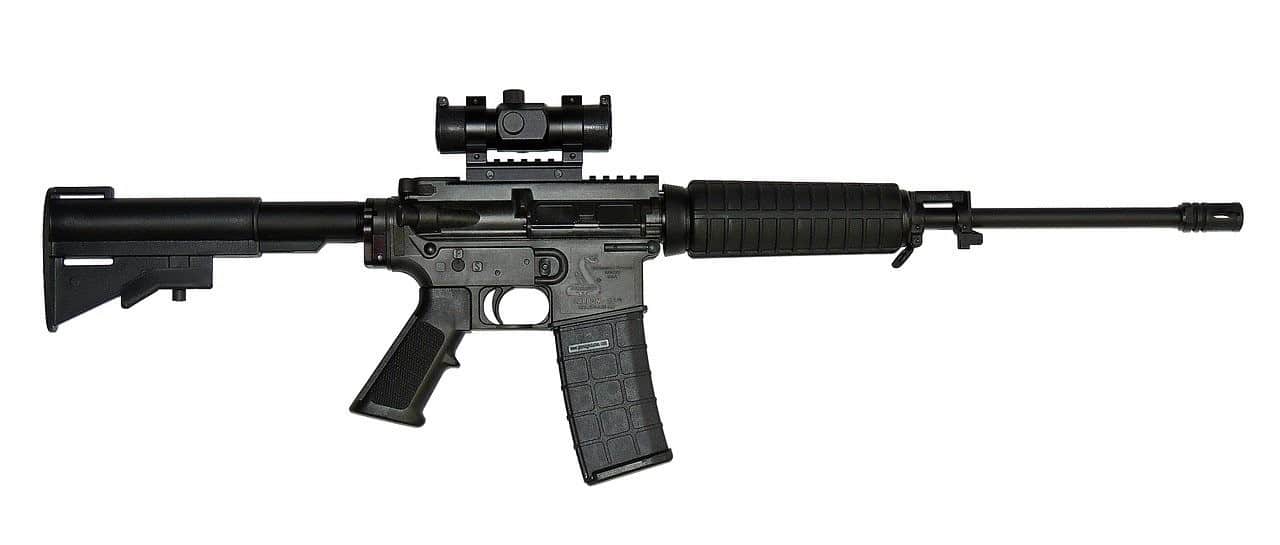
AR-15 is a rifle mainly used by the US Military and enforcement officials but can also be owned legally by regular citizens. It is semi-automatic, meaning every pull of the trigger constitutes one shot, and as soon as the cartridge is ejected, a new one slides into the chamber automatically.
Contrary to the knowledge of many, the “AR” in AR-15 does not stand for “Assault Rifle,” but instead means “ArmaLite Rifle.” It was designed by Eugene Stoner in the 1950s under the ArmaLite company, thus the name of the firearm. It quickly captured the attention of many, and a few years later, Colt’s Manufacturing Company bought the rights to the design.
To this day, AR-15 is one of the most popular firearms worldwide. In America alone, the estimated legally owned AR-15 is 11,000,000.
Gas System
The type of gas system AR-15 uses is direct impingement. It is a system that directs gas from the ignited gunpowder of a cartridge to the slide assembly or bolt carrier to cycle the rifle’s action.
It does not utilize a separate piston, gas cylinder, and operating rod assembly, unlike the traditional gas-operated firearms. Instead, the pressure from the emitted gas acts upon the carrier and the bolt to cause the firing action. Further, this system makes the rifle’s overall cost cheaper and its weight lighter by decreasing the mass of its operating parts.
The only downside of this gas system is that the breech of the firearm becomes more prone to fouling, a build-up of powder residues due to high-temperature and frequent exposure to moisture.
Fouling may affect the accuracy of a firearm that in turn, decreases its overall reliability. Further, it may cause corrosion if left for a long time. Thus, regular maintenance and cleaning are necessary to keep excess powder and other solid particles from creating a lump inside the weapon.
Cartridge and Chamber
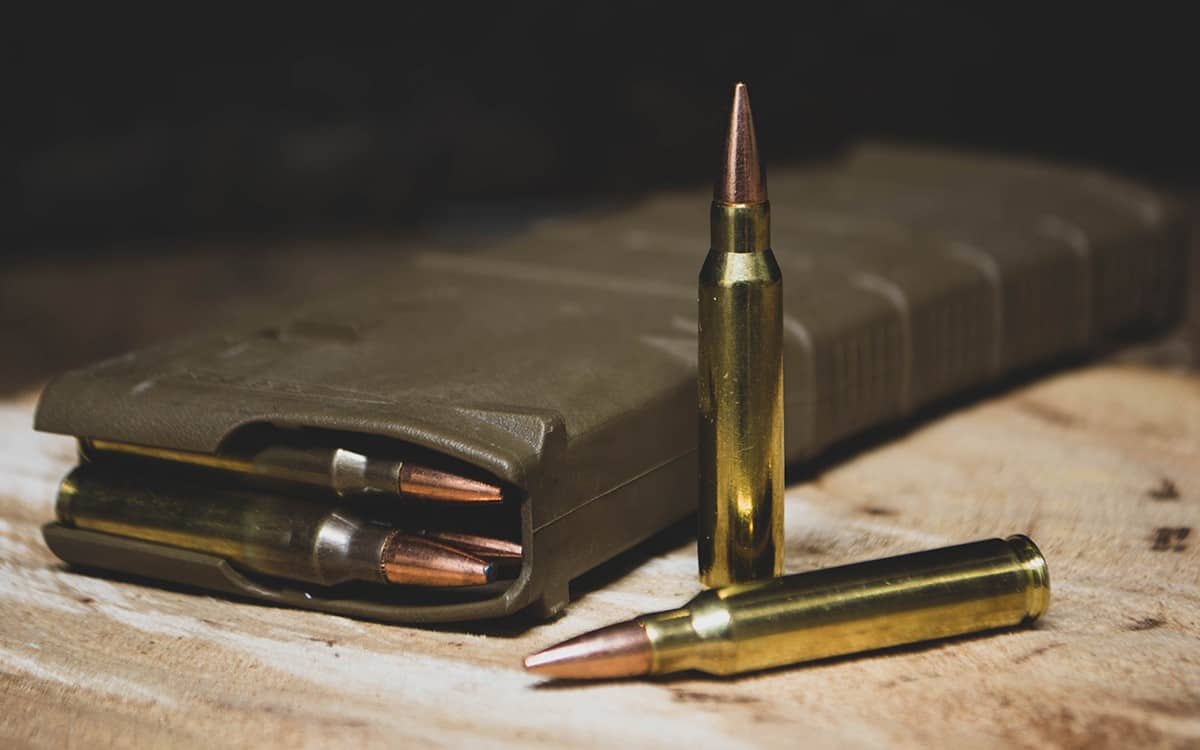
There are several cartridges and chamberings available for AR-15; among the most popular ones are the 5.56mm NATO and .223 Remington. Others include .22 Long Rifle, 6.5 Grendel, .308 Winchester, 6.5 Creedmoor, .243 Winchester, and 300 Blackout.
The two cartridges, 5.56mm NATO and .223 Remington, are often interchangeably used since they are virtually similar. However, this practice can be dangerous under the wrong circumstances.
The 5.56mm NATO is intended to be used with a long leade, whereas .223 Remington is meant for chambers with a short leade. The leade length is inversely proportional to the pressure a firearm’s mechanism can produce, meaning a long leade has a low output pressure and vice versa.
Since the 5.56mm NATO cartridge already carries a high pressure itself, it should not be used with a .223 Remington chamber, which has a short leade (high pressure). This combination may result in accidents due to the dangerously high amounts of total pressure. On the other hand, it is perfectly safe to fire a .223 Remington cartridge out of a 5.56mm NATO chamber. Although, it may be inaccurate due to the low total pressure.
Both cartridges are excellent for an AR-15, but extreme care must be applied to avoid unwanted accidents.
Barrel Length and Twist Rate
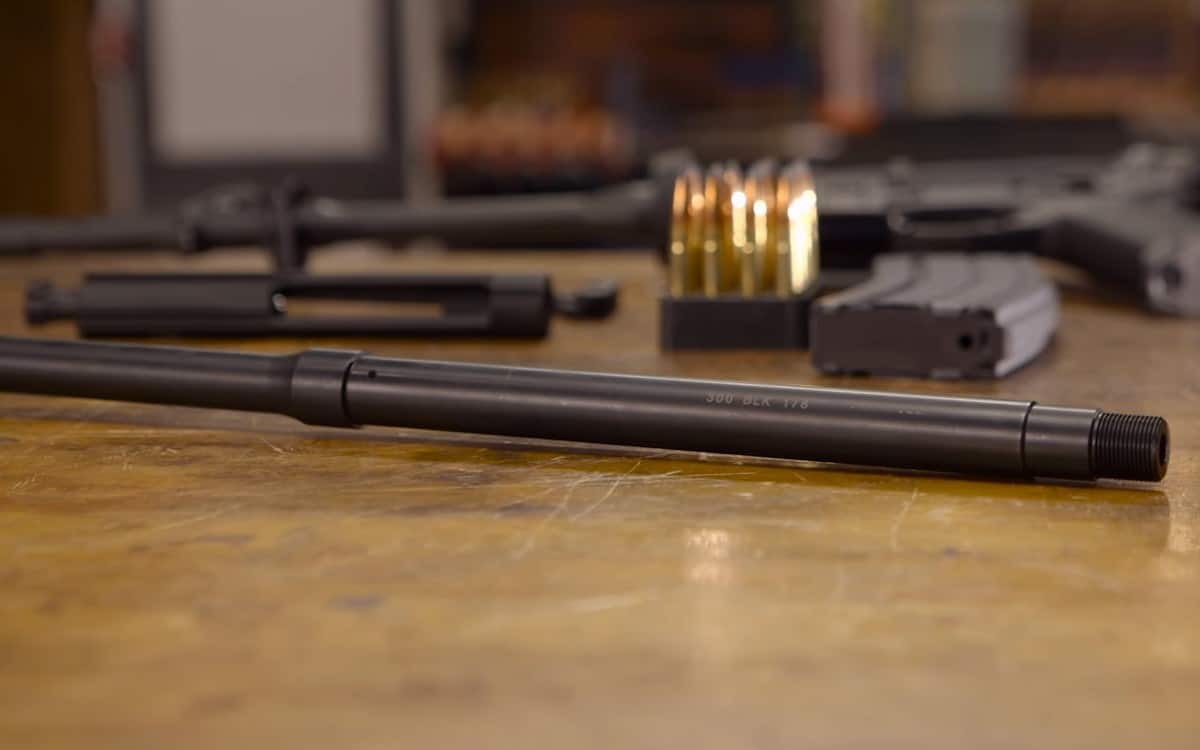
Barrel length affects the bullet’s velocity proportionally, meaning a longer barrel will give the bullet a faster muzzle velocity. Thus, to increase the range of an AR-15, you need to use a longer barrel.
The twist rate, on the other hand, pertains to the number of revolutions a bullet will make before it exits the barrel. For instance, a 1:8 twist rate means that the bullet makes one full rotation every eight inches. This property is directly related to the AR-15’s accuracy, i.e., more spins constitute to more stable bullet flight.
The standard configuration of an AR-15 is 1:7 or 1:9 twist rate and 16” barrel length. The 1:9 twist rate is ideal for lighter ammunition, while 1:7 is intended for heavy loads.
Related Laws
Currently, there are no federal laws that prohibit anyone from manufacturing, transferring, or possessing an AR-15. It was, however, banned from 1994 to 2004 by the Violent Crime Control and Law Enforcement Act of 1994. But, the act was never renewed despite the strong support of many.
Nowadays, you can legally own an AR-15 as long as you are at least 18 years old and your state allows it. Some of the states that prohibit the use and possession of AR-15 include Hawaii, California, Massachusetts, Washington, D.C., New Jersey, Maryland, and New York. To ensure that AR-15 is legal in your state, consult your local government office.
Is the AR-15 Good?
For Beginners
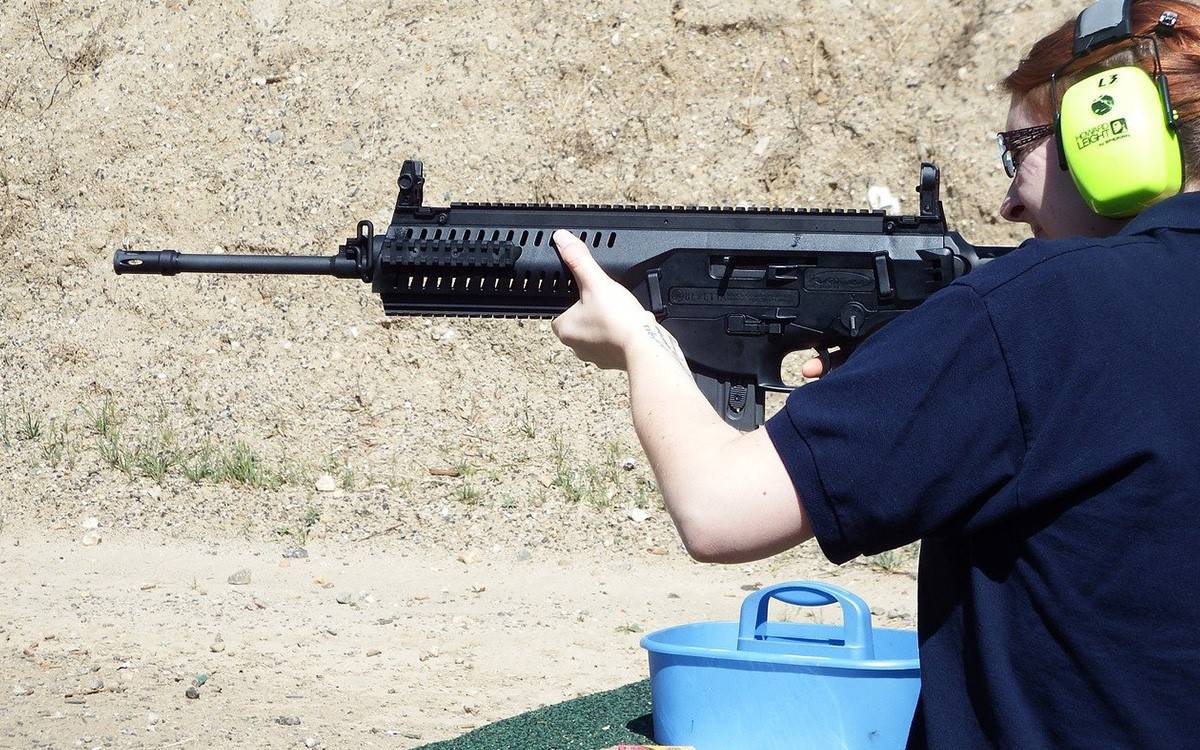
When taken part by part, the AR-15 is a mediocre firearm. However, as a whole, it performs exceptionally well, with the bonus of being light for its class. Some rifles probably outperform the AR-15 in certain categories, but in terms of overall performance, it is simply the best.
There are several reasons that make AR-15 an excellent choice for beginners, primarily because it is lightweight and has a relatively simple control layout. Furthermore, it features an adjustable stock (the back portion of the firearm, also known as the shoulder stock) to accommodate the shooter’s stature and if the shooter is wearing body armor or backpack straps.
The steps required to load and fire an AR-15 are relatively simple as well. It is soft shooting and results in minimal recoil and blast, unlike most rifles. Despite its minimal action, it is fairly accurate and can reach a target several hundred meters far. Also, the rifle seals tightly; thus, only a small amount of fine dust can escape per firing.
In terms of maintenance, the AR-15 does not require frequent oiling and cleaning. But when you need to, you can easily disassemble its base. Oiling the ports of its bolt carrier is sufficient to keep the rifle running smoothly.
The cost of AR-15 is also within a decent price range. A legit one costs about $1,000, but you can get cheaper versions at around $600. The cheaper versions are good enough to keep your home safe, but they are not as reliable and long-lasting as the original ones.
For Preppers
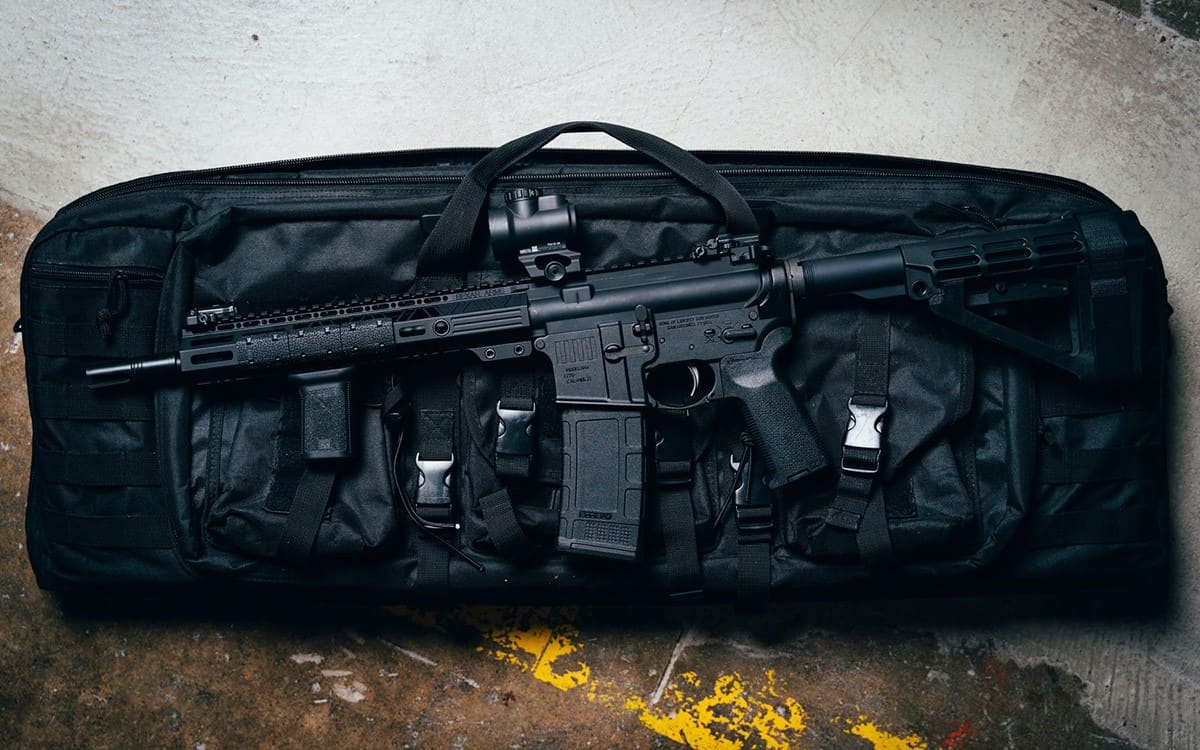
The primary factor that preppers consider when choosing a firearm is the availability of ammunition, gears, and magazines, whether for self-defense or disaster preparedness; AR-15 fits this consideration very well.
As mentioned above, one of the most common cartridges used for AR-15 is the 5.56mm NATO. Contrary to what detractors might say, this cartridge carries enough power with it to defend against pillagers and to take down large animals.
The 5.56mm cartridge is very common, along with its magazine. Hence, an AR-15 is ideal for preppers. Most ammunition and gears you need for it are widely available to almost all gun shops. This accessibility of supplies makes AR-15 an excellent choice if you want an easy-to-reequip firearm.
In addition, AR-15 is highly adaptable. You can modify it to align it with your shooting style and other preferences. You can adjust the grip, stock, forearm, and add optics. You can also enhance the action parts, change the barrel length, or even the rifle’s caliber. Your upgrade options are virtually limitless, and the components you will need are highly accessible.
The customizability and versatility of the AR-15 make it suitable for preppers. It has decent power for self-defense, home defense, and even for hunting.
For Hunters
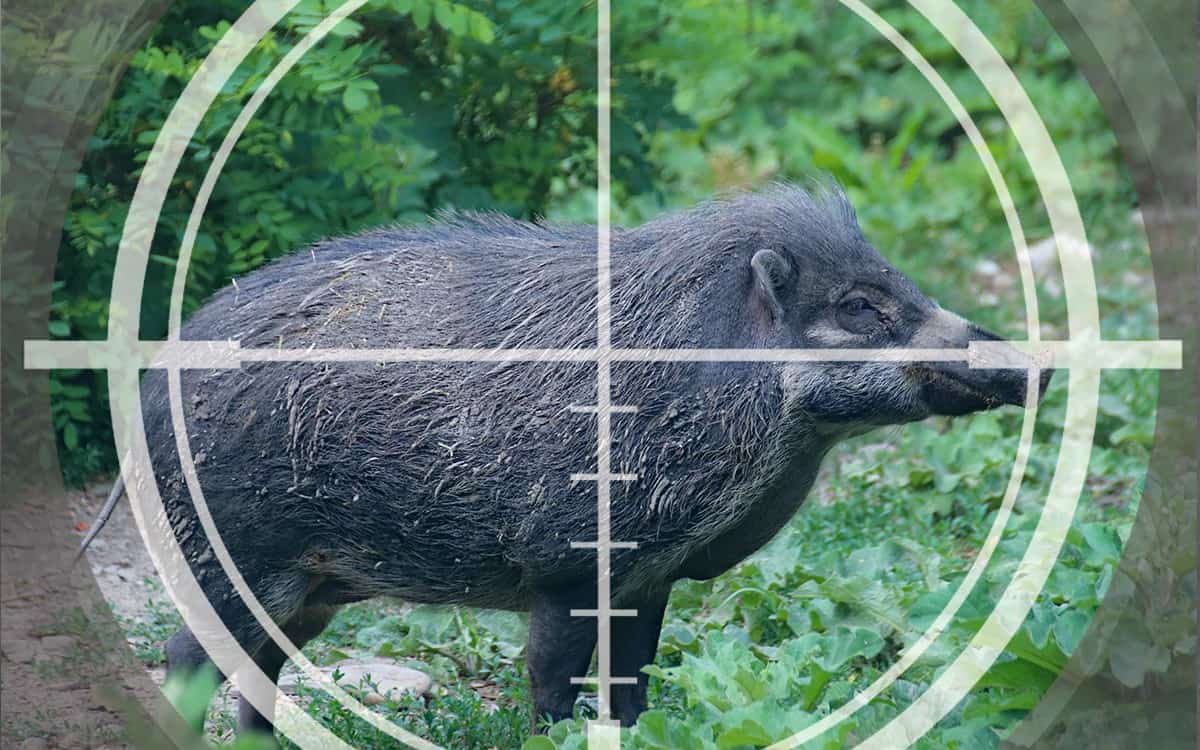
As previously mentioned, AR-15 is lightweight and powerful enough to take down large animals. You can carry it without much effort, and it certainly can immobilize your target. It is also safer to use due to its “drop safety” feature, which is not common among rifles.
It can also handle harsh and stormy weather. Since its stock is not made of wood, its tendency to lose accuracy due to swelling and warping of the stock is nonexistent.
In general, a semi-auto rifle like AR-15 is more preferred for hunting since the shooter won’t need to adjust his hand position every after shot. This feature is ideal when hunting pack animals, such as coyotes and wild boar, where the shooter might need to take down multiple animals quickly.
Lastly, AR-15 has minimal recoil action and is a smooth shooting rifle due to its gas system. Thus, it has high accuracy, even higher than most rifles intended for hunting.
How to Use an AR-15?
Clearing an AR-15
First, remove the magazine by pressing the release button, usually located on the right side of the rifle and above the trigger. You can do so without repositioning your hand; just press the button with your trigger finger. Then, set aside the magazine.
Next, open the bolt by pulling the charging handle backward as far as possible. A cartridge, if there’s any, should be immediately ejected when you do this. Lock the bolt open, then double-check the chamber to ensure that it is indeed empty.
Now, you need to lock the bolt back in. Press the lower part of the bolt catch/release located on the rifle’s left side, opposite the magazine release button. Simultaneously, slightly pull the charging handle back to loosen it. Then, push it forward to lock it into place.
Lastly, set the safety selector. The selector is on the upper left side of the rifle and near the pistol grip. Usually, there are two safety modes: semi and safe. Point the arrow to “safe.” Upon clearing the rifle, you can now do other things to it; you can clean it, load it, or anything else.
Loading an AR-15
While loading the magazine, put the rifle down with the safety selector still on “safe” mode, and the muzzle pointed to the ground. The ejection port should be facing up, so it’s clear to everyone that the gun is unloaded.
To load the magazine, pick it up with your supporting hand and press its bottom against a steady and hard surface. Check the follower – the spring-loaded part of the magazine that pushes the cartridges up. It will guide you to the proper orientation of loading the bullets. Now, pick a bullet and load it to the magazine using your dominant hand.
Once you’re done loading the magazine, take the rifle by holding it on the pistol grip. Check the safety indicator to make sure that it is still in safe mode. Insert the magazine and ensure that it is well seated by giving it a little push. A click will indicate that it is fully seated.
After securing the magazine in place, press the upper part of the bolt catch. If you do this while the bolt is locked open, the bolt will close, and a cartridge will be automatically loaded to the chamber. On the other hand, if the bolt is locked close initially, you will need to pull the charging handle to load the chamber.
You are all set at this point. To initiate firing, all you have to do is disengage safe mode then pull the trigger.
Firing an AR-15
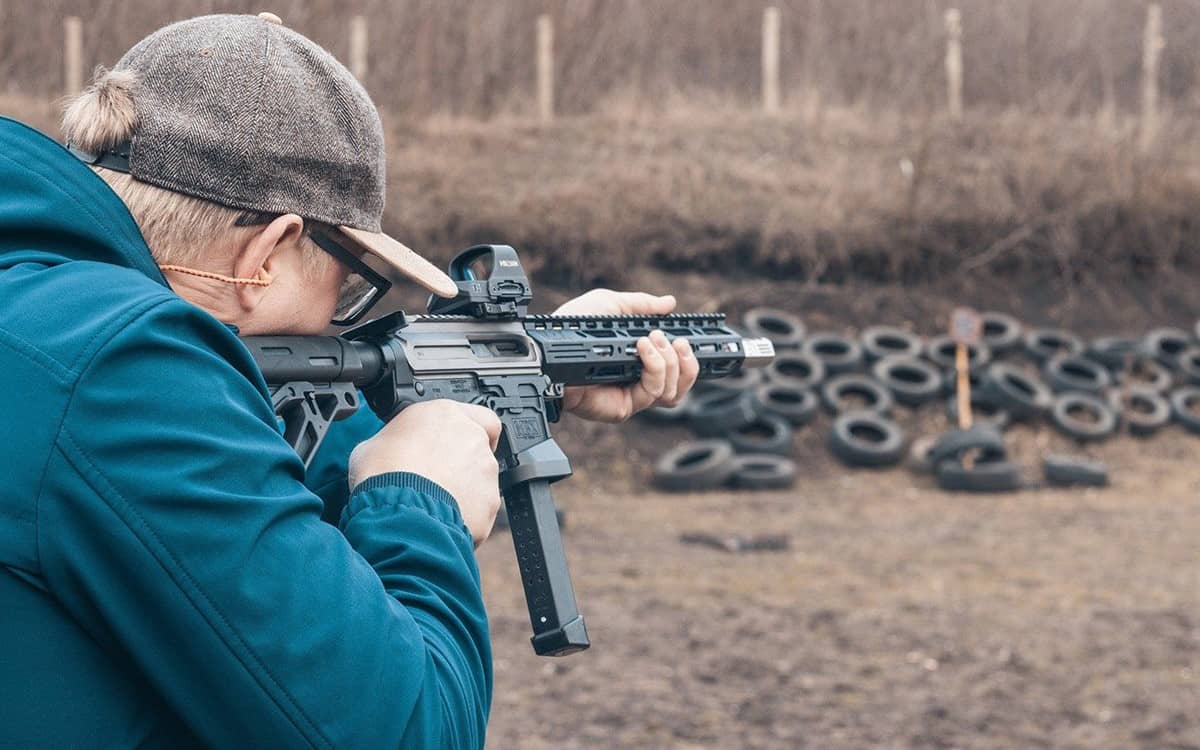
Ear and Eye Protection
AR-15 is loud. Hence, you will need decent gear to protect your eyes and ears when firing this rifle. Without protection, the sound from AR-15 is like dynamite blowing up a few inches from you.
Proper Stance and Grip
There are several stances used when firing an AR-15. Two of the most common stances are the prone position and the standing position. The prone position is done by laying on the ground, your back facing the sky.
On the other hand, the standing position is a stance with both of your feet on the ground. Assume an athletic posture, bend your knees slightly, and concentrate your weight forward.
Place your hand on the pistol grip as high as possible, and keep your index finger parallel with the barrel. Bend your elbow and keep them close to the rifle. They should be pointing to the ground and not in a horizontal position.
Then, raise the stock and place it a bit off of your shoulder, somewhere at the edge of the pectoral muscle. The length of an AR-15’s stock is adjustable, so expand or contract it based on your preferences. Bring in the stock closer if you are using a magnified scope to see through clearer. If not, extend it to have a farther grip and thus better control.
With your hands in the proper positions, tilt your rifle slightly to the ground so that it is pointing the feet level of your target. This position is called “low ready,” and you will be keeping it until you are set to fire the rifle.
Sight Alignment
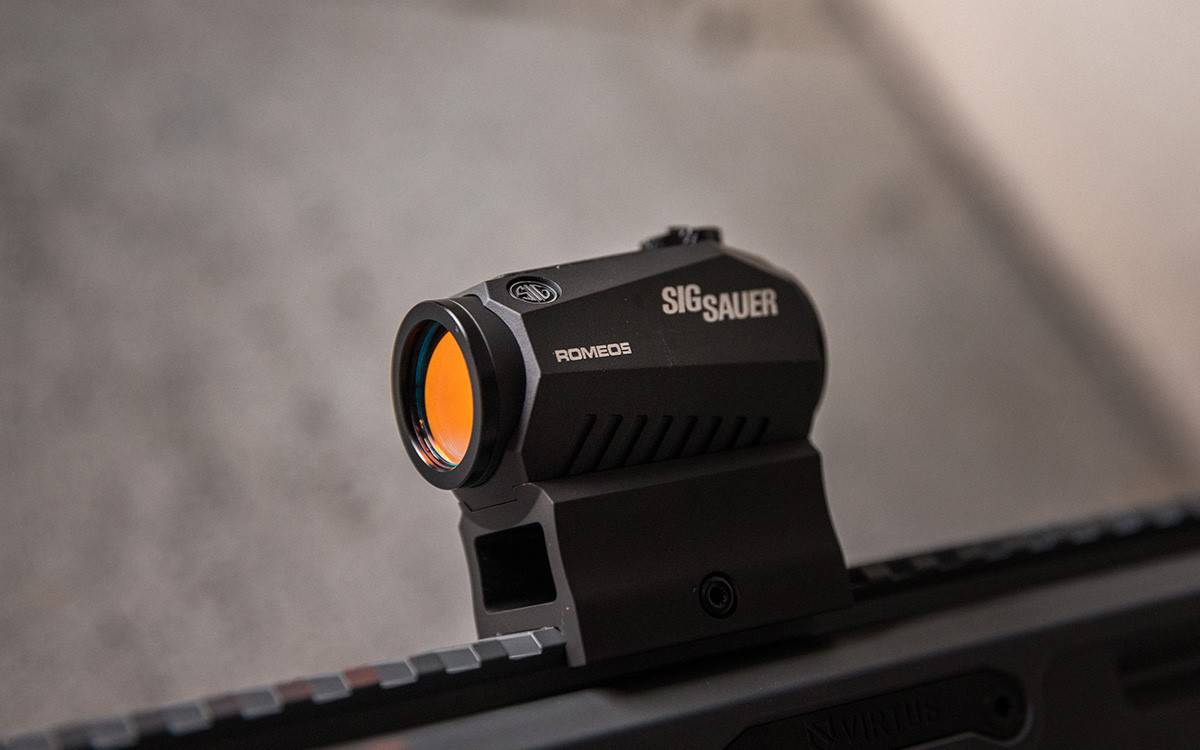
There are plenty of scope variations for an AR-15, but we will only discuss the most common ones.
First is the traditional iron sights that have peep sights. These usually consist of two holes: a big and a small one. The big hole lets you align your sight to the target quickly, whereas the small one provides you greater precision.
All you have to do is look through the hole from the firearm’s rear, then locate your target. You might need to close an eye to focus your sight. The sight will probably slightly wobble as well, which is perfectly normal since it is difficult to make it extremely still when firing in a standing position.
Another scope type is the red dot sight. You just need to align the center of your target with the red dot on the scope.
The last one is the magnified crosshair scope, which is the most traditional among the scope types mentioned here. It works similar to the red dot sight, except it is slightly magnified, and you need to align the center of your target with the center of the crosshair instead of the red dot.
Regardless of the type, you will need to calibrate the accuracy of the scope by a process called sighting-in. Sighting-in pertains to adjusting the sighting system to ensure that the scope’s aim is the same as the intended end of the bullet’s trajectory.
Shooting the Rifle
To fire the rifle, you have to disengage “safe mode” first. You can remove the safety without repositioning your hand; you just need to use the thumb of the hand you’re using to hold the pistol grip. Then, pull the trigger by applying steady pressure to initiate firing.
Immediately after pulling the trigger, the bolt will move back, the shell casing of the fired bullet will be ejected, and a new cartridge will be loaded into the chamber. The rifle will be ready for another shot, and the cycle will continue until your magazine becomes empty.
The rifle will automatically lock open after firing the last round. You can either load a new magazine or leave it in the bolt locked-in position if you don’t intend to use it immediately.
AR-15 Parts You Can Upgrade
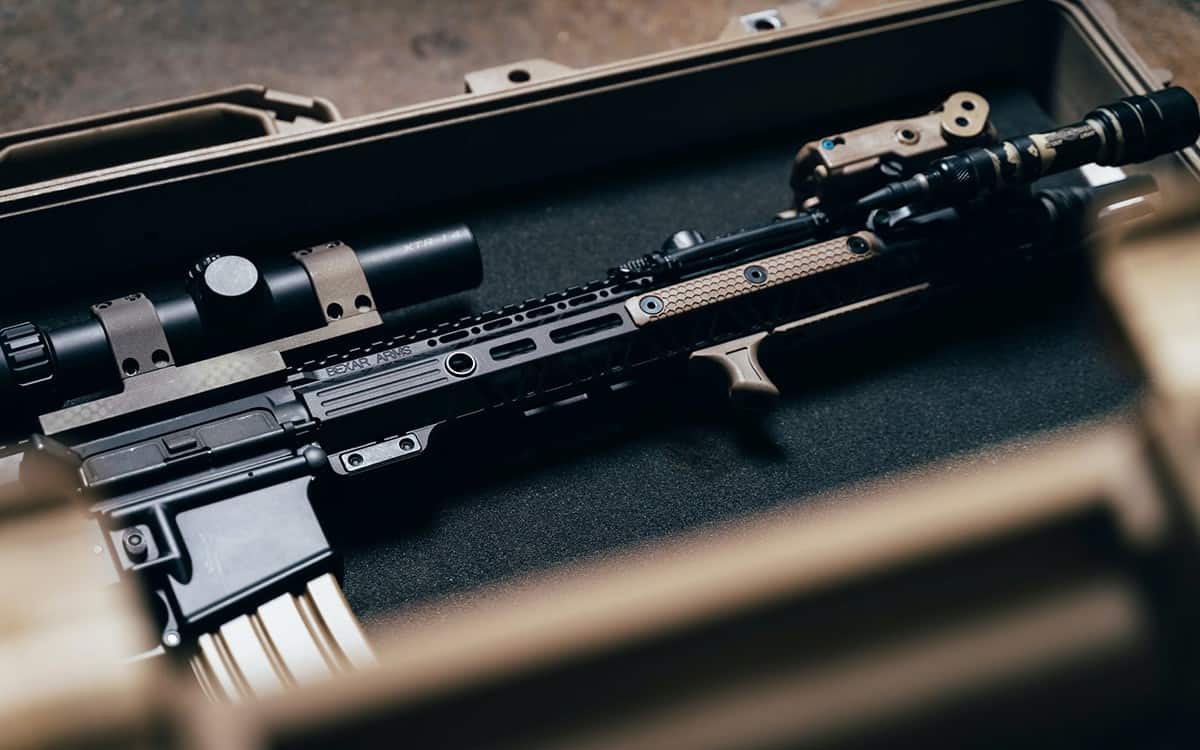
Sight
Most AR-15 readily come with iron sights. These consist of two apertures, a large and a small one. Initially, the zeros or aims of these two are a bit inaccurate, so you have to calibrate them.
You can upgrade the sight by installing optics to your rifle. However, if you intend to depend on iron sights alone, upgrade by getting a better aperture and post to improve precision and visibility (aperture is the rear ring, while the post is the front sight blade).
Light
Shooting without identifying your target first is both morally wrong and a waste of cartridge. It may result in accidents such as causing harm to an innocent civilian or even a family member. Hence, you must verify your target before firing a shot.
You need to install a flashlight to make your rifle operational even in a low light environment. You can either mount a small flashlight on it or use a purpose-built weapon light. Both are fine as long as you use a mounting mechanism compatible with your rifle’s handguard.
You should use a light that is simple to operate and reliable. It doesn’t have to be extremely bright. A flashlight with a 120 lumens rating is sufficient to identify your target. Using light with a higher lumen rating provides better visibility but is not necessarily required.
Sling
Sling is the rifle counterpart of a handgun’s holster. It frees your hands, so you can do other things while still having your gun with you.
You should get a quick-adjusting sling that has a two-point configuration. The best ones available on the market are the Viking Tactics VTAC Sling, Blue Force Gear VCAS, and Magpul MS series.
Trigger
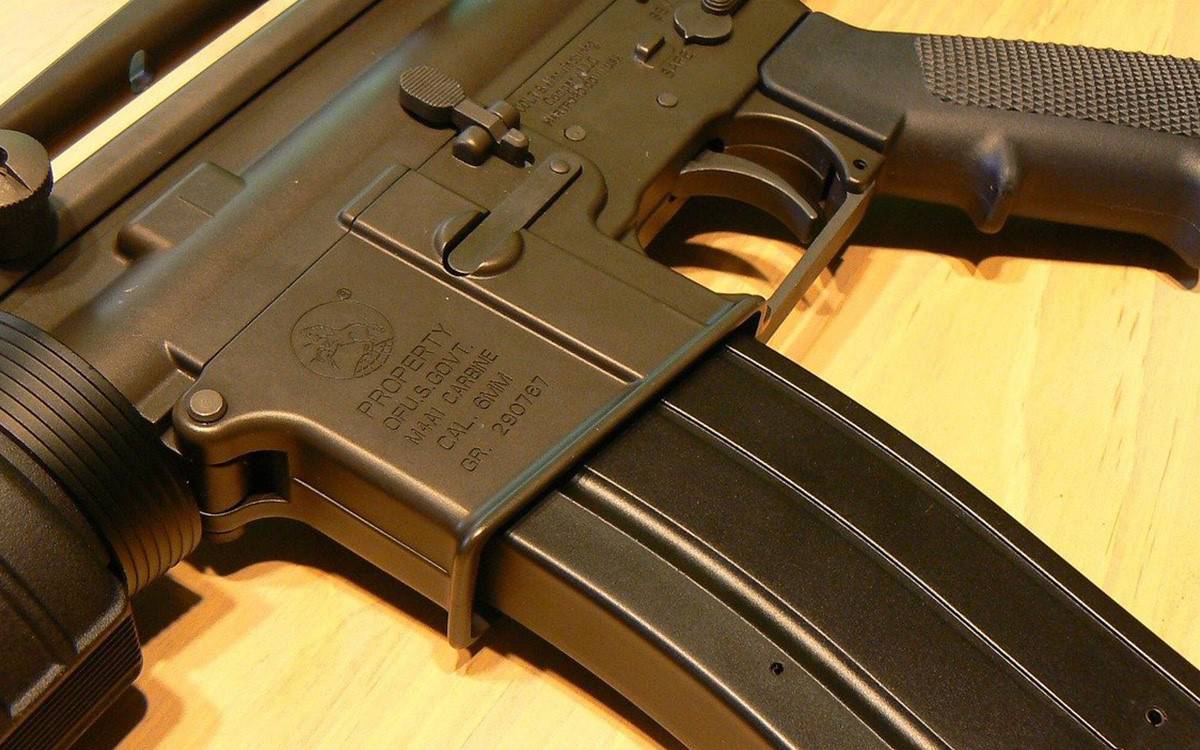
The default trigger of most AR-15 is single-stage and non-adjustable. These are inexpensive, reliable, strong, and can pull a weight of around 5.5 to 9.5 pounds. However, it only has an average precision and thus not suitable for shooters with far targets.
Fortunately, AR-15 triggers can be improved and upgraded. Far shooters prefer to use two-stage triggers or refined single-stage triggers since they are lighter and smoother than the default single-stage trigger.
Stock
Upgrading the stocks of your AR-15 improves it ergonomically. You can add a buttpad to make it softer when you press it against your shoulder. You may also add compartments to it to store spare parts and batteries.
Optic
The single, most important upgrade you can install to your AR-15 is optics. The best optic to date is the red dot sight, which drastically improves the ease of locking on your target. Unlike the traditional iron sights, it does not need manual sight alignment. Instead, all you have to do is align the red dot with your target; the bullet is guaranteed to hit wherever the red dot is.
Safety Reminders
Owning an AR-15 is a huge responsibility. Here are some reminders that you have to keep in mind to avoid accidents due to carelessness and neglect:
- Always treat your gun as if it is loaded.
- Always point the muzzle in a safe direction whenever you are not using the rifle.
- Do not put your finger on the trigger until you are ready to shoot your target.
- Identify your target first before you shoot.

